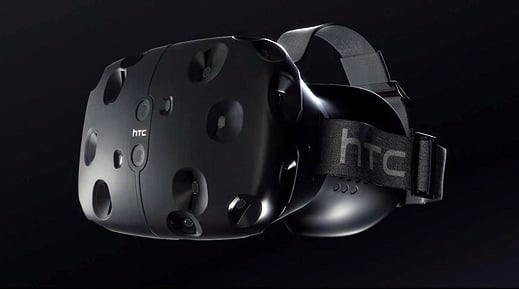The Best Virtual-Reality Experience So Far
At last week’s Game Developers Conference, an annual gathering in San Francisco for the makers of video games and the technology that powers them, Shuhei Yoshida, president of Sony’s Worldwide Studios, claimed that we are about to witness the birth of a “new medium.” Yoshida was there to reveal further details about Morpheus, the Japanese company’s forthcoming virtual-reality headset for PlayStation 4, which is due for release in the first half of 2016. With its bright, high-resolution, high-refresh-rate screen, it’s a powerful device. Across the road, Facebook demoed the latest version of Oculus Rift, the as-yet-unreleased virtual-reality headset that has led the current resurgence of interest in VR technology.

The surprise announcement of the show was, however, the news that Valve, the Seattle-based game developer behind Steam, the closest thing video games have to an iTunes digital store, has been working in secret on its own VR headset in conjunction with HTC. Vive, as the headset is named, is due for general release later this year, apparently ahead of both Morpheus and Oculus Rift. Like its rivals, the device is worn on the top of the head, encasing the wearer’s eyes to give them the sense of having bodily entered a simulated environment, which is rendered on its visorlike screen.
Vive is distinguished from its two major rivals in a key way: it comes with two 6-by-6-inch laser tracking boxes that track your body as you move around a room. In this way you’re able to physically wander the simulated scene. Draw near to a wall in your home and phantom barriers shimmer into view within the virtual world to warn you of impending collision.
During a 30-minute demonstration behind closed doors at the conference, a handful of visitors were offered the chance to try out the hardware with six startling interactive demos. The first places the Vive’s wearer in the deep sea, where fish flit all around. You’re standing on the rotten remains of a shipwreck, free to tour its deck and peer over creaking rails into the murk. After a few minutes a vast whale emerges from the gloom, close enough to touch, one wild eye hunting for your own.
You interact with the simulated worlds via two remote controls, which appear as virtual devices inside the game, mapping to your own gestures and movements. In an extraordinary art demo, a virtual palette of paints sticks to one of your hands, while the other holds a brush. You are able to paint lines of color in 3-D using different types of paint with different qualities (shimmering, sparkling, or plain). You may walk around and through your creation as it hovers in the air, adding new lines and flourishes as inspiration takes you. It is extraordinary and unprecedented.
In another of the demos you must cook a meal as if you were a chef in a restaurant: walking between the fridge and the cooker, breaking eggs into a saucepan, chopping up tomatoes, and so on. Another demo places you in a live, Google Earth–powered simulation of San Francisco: you’re a giant roaming the streets, towering over the skyscrapers.
The freedom of movement Vive affords its user within the simulation separates it from Oculus Rift and Morpheus, in which you can, at most, lean for a better view of the virtual world. Of course, in a conference setting within a specially built room, free of clutter and furniture, the technology was shown in its best light. How well the design will translate to the untidiness of the home is unclear. Nevertheless, Vive is an astonishing development in the rapidly evolving virtual-reality landscape, one that lends early credence to Yoshida’s bold claim of an emerging medium.
Keep Reading
Most Popular
Large language models can do jaw-dropping things. But nobody knows exactly why.
And that's a problem. Figuring it out is one of the biggest scientific puzzles of our time and a crucial step towards controlling more powerful future models.
The problem with plug-in hybrids? Their drivers.
Plug-in hybrids are often sold as a transition to EVs, but new data from Europe shows we’re still underestimating the emissions they produce.
Google DeepMind’s new generative model makes Super Mario–like games from scratch
Genie learns how to control games by watching hours and hours of video. It could help train next-gen robots too.
How scientists traced a mysterious covid case back to six toilets
When wastewater surveillance turns into a hunt for a single infected individual, the ethics get tricky.
Stay connected
Get the latest updates from
MIT Technology Review
Discover special offers, top stories, upcoming events, and more.